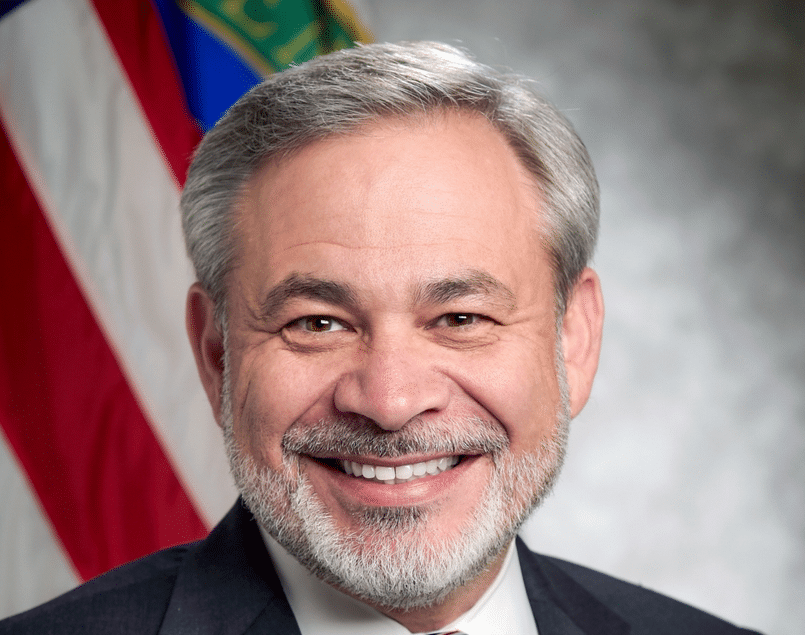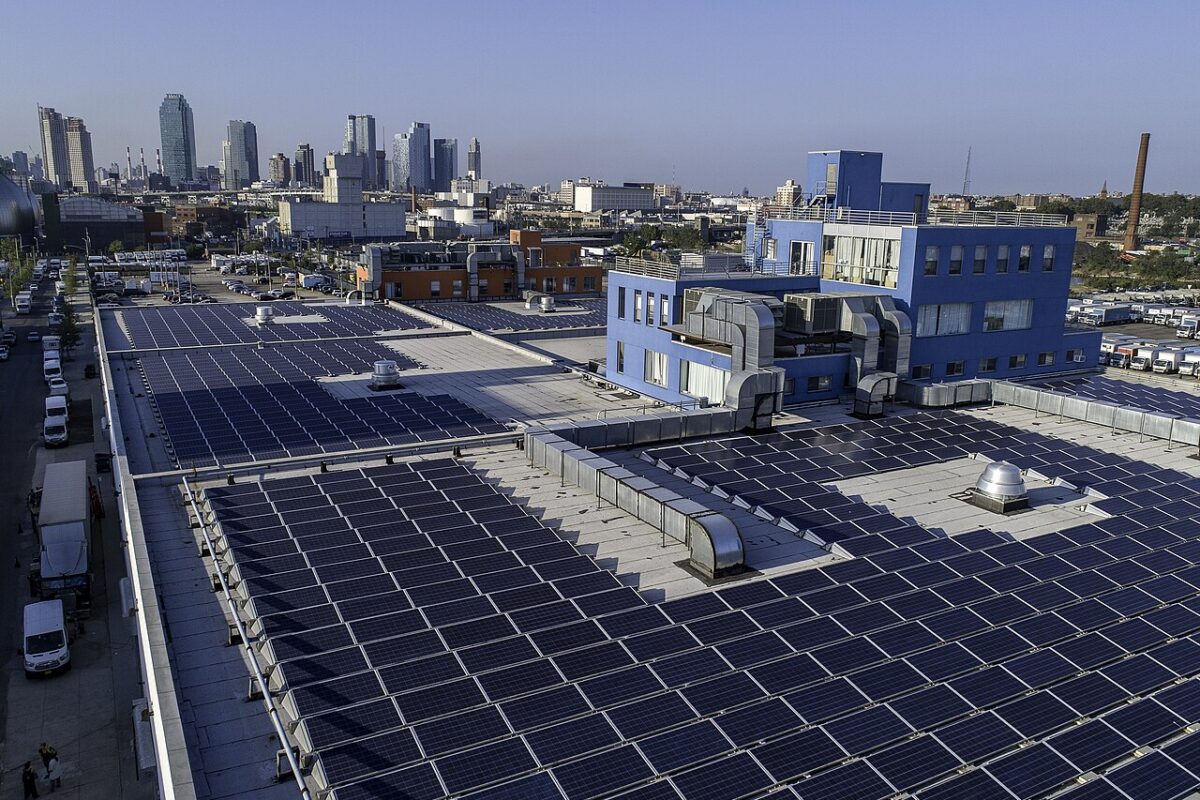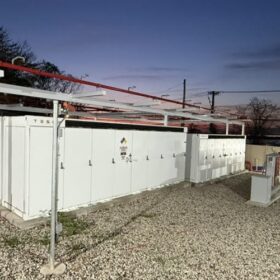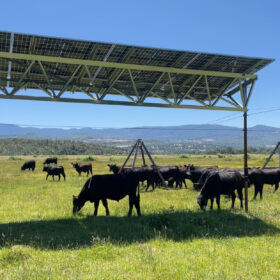DOE Chief Dan Brouillette, writing in an op-ed, has a plan for solving California’s energy problem: For more than a month, Californians have lived with government energy reduction mandates and rolling blackouts during an intense heat wave. Recently, Los Angeles Mayor Eric Garcetti cheerfully tweeted, “It’s almost 3 p.m. Time to turn off major appliances, set the thermostat to 78 degrees…” Already paying some of the highest electricity rates in the country and now undergoing energy reduction mandates and rolling blackouts, California residents are rightly asking: Is this what our state leaders had in mind when they touted their 100 percent renewable energy plan? Unsurprisingly, the environmental activists and politicians who pushed the plan through in Sacramento left the disclaimer “may cause blackouts during heat waves” out of the plan’s promotional materials. Of course, this all could have been avoided had the state chosen to prioritize energy security and reliability over appeasing progressive special interest groups Diablo Canyon nuclear power plant, which provides 9 percent of the state’s electricity, is slated for premature closure, taking a huge amount of reliable power off the grid. The plant still has years of useful life, and the state must find a way to keep it online if California leaders want to retain this source of clean, reliable electricity. Source: The Orange County Register
Minnesota solar developers fault Xcel for interconnection delays in their projects: The energy firm rejects the criticism; a $1 million fine is at stake. Minnesota solar-energy developers said their proposed projects — from rooftop arrays to community solar gardens — are suffering long delays at the hands of Xcel Energy, hurting customers and investors alike. One solar developer has filed more than 120 complaints with state public utility regulators against Xcel, which could lead to a $1 million fine against the state’s largest electric utility. Xcel, while acknowledging some holdups, is contesting the fine. The quarrel stems from a 2019 standard that Xcel, the solar industry and clean-energy groups all hoped would improve the state’s “interconnection” process. “It’s been pretty abysmal,” said David Shaffer, executive director of the Minnesota Solar Energy Industries Association. In some instances, “customers have dropped projects.” Source: Star Tribune
Construction underway in Central Arizona on 100-MW East Line Solar Plant: Salt River Project (SRP) and sPower, a renewable energy Independent Power Producer (IPP), announced construction is underway on “East Line Solar,” a new solar plant which will bring $10 million in 25 years of tax revenue and up to 350 construction jobs to Pinal County. It will also soon deliver 100 MW of solar generation to the Intel Corporation’s Chandler facility. East Line Solar received its conditional use permits in the City of Coolidge in 2019 and is expected to begin operations in December of 2020. The East Line Solar facility will support Intel’s Chandler Ocotillo Campus, one of the corporation’s largest global, semiconductor manufacturing sites. Source: Tucson.com
More on interconnection — California adopts first interconnection rules to utilize hosting capacity results: The California Public Utilities Commission (CPUC) issued sweeping changes to Rule 21, the rules under which distributed energy resources, like solar power and energy storage, may interconnect to California’s electric grid. The changes represent a radical shift in how states handle interconnection policy, with a number of unprecedented changes that will provide a model regulators in other states can look to as they work to enable more renewable energy on the grid through modern interconnection policies. Interconnection to the electric grid is a critical step in the deployment of most renewable energy systems, including solar power and energy storage systems. Yet lengthy processes for interconnection approval that rely on outdated technologies can often be a barrier in the process. The revisions to Rule 21 encompass many issues but three of the most noteworthy include 1) the plan to incorporate data on the actual grid conditions at the locations of projects that request to interconnect; 2) an option for developers to propose project operating schedules that are based on those grid conditions; and 3) the addition of more advanced interconnection policies for interconnection of energy storage projects. Read the details from IREC here.
This content is protected by copyright and may not be reused. If you want to cooperate with us and would like to reuse some of our content, please contact: editors@pv-magazine.com.








When elctrical solar panels are hooked to the grid, from a home, the electrons go less than a block away before being consumed by other customers. In most cases, it does no even raech the step down transformer. The utility gets to charge other customers a higher rate for the lower rate electricity they pay you for. There are no “line losses” like when they bring in power from hundres of miles away and building a conventional power plant uses up more deep mine iron ore, copper, zink and heavy metals than the silicone/aluminum based solar panel made from the most abundant, cheap materieals on the planet. Recyclede Glass bottles and Aluminum cans could be used to build 98% of solar panels unlike power plants that need all newly mined Iron to make steel girders, pipes and re-bar.
This article (or is it an editorial?) confuses me. There are so many failures of objectivity that it’s hard to know where to begin.
First, the headline speaks of “Radical Environmentalists” without quotes, which indicates that it is the author’s choice of words, not the Energy Secretary’s. The absence of quotation marks indicates a belief by the author that such people exist and that the people the Energy Secretary slammed may accurately be described as such. So, who are these radicals? Left-wing lunatics who oppose generating electric power with coal? Crazy people who suggest that renewable power is cheaper than fossil power for no better reason than the fact that it is?
Next I learn that for more than a month I and other Californians “have lived with government energy reduction mandates and rolling blackouts during an intense heat wave.” That’s simply not true the historic heat wave lasted more than a week, but it’s long gone. In my area, we just started another heat wave yesterday, but it’s nothing remarkable. I remember 2 or 3 days during the exceptional heat wave when we were told that people in my general area might lose power to reduce load, but that’s not remotely a common experience and, like most people, my home is in outage zone 50, which is immune to such blackouts although not to the Public Safety Power Shutoffs we had last year. The article falsely suggests that this has been part of day-to-day life for more than a month, which is complete nonsense.
Next, I read that “California residents are rightly asking: Is this what our state leaders had in mind when they touted their 100 percent renewable energy plan?” The word “rightly” there is an expression of the author’s (ill-founded) opinion and has no place in what appears to be a news article. If this was an opinion piece, as is reads, it should be clearly marked at the top as “Opinion,” “Editorial,” or “Paid Advertorial Submitted by the American Coal Council.” Setting aside the inappropriate insertion of the author’s opinion, the statement is baseless and false. Was there polling done to suggest that any Californians or anyone at all other than your anti-renewable energy editorialist is asking this question? No. I communicate with other real-world Californians and the questions I’m hearing are more along the lines of dismay that almost all of the largest (acres burned), most damaging (structures destroyed) and deadliest (persons killed) wildfires in the recorded history of the state have been since 2000 and most have been in 2017 or later. These real Californians are aware that 2017, 2018, and 2020 have been the year of the most acres burned by wdfires, the year of the most wildfire deaths and structures burned and the new year of the most acres burned in the history of the state. They noticed that the heat wave a month ago was essentially unprecedented. That the unprecedented heat wave caused relatively minor power problems was not a major focus or a surprise for those I was speaking with.
In any case, the power problems we had were not primarily a result of having too much of our power coming from solar sources, but simply not having enough power production capability in the state to meet historically exceptional demand when adjacent states, also suffering from the same heat wave, had no power to sell to California. To be very clear, having more solar power generating capability in the state would have been helpful as the panels do continue generating power after 3:00 pm. With more solar, there would have been no request to raise thermostats after 3:00 and homes could have been cooled when the sun set and generating capacity did decrease. So, as extreme heat waves become.e more common, we will need to increase our power production capability, but I’ve seen no analysis to support the conclusion that the percentage of power generated by solar panels is too high to provide reliable power and the suggestion that the state needs more gas plants is unsupported.
Even if more diversification were needed, HVDC interconnections with the wind corridor in the plains states would probably be a better (and cheaper) choice than building inefficient gas peaker plants that might only be used a few dozen hours a year.
You’re right. I’ve clarified that this was in fact an op-ed from the DOE secretary and added quotations to “radical environmentalists.”